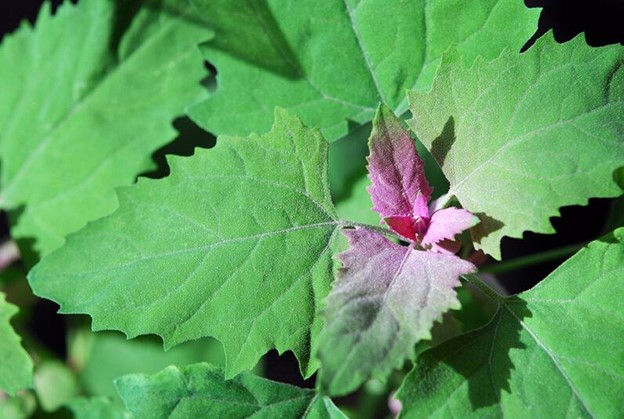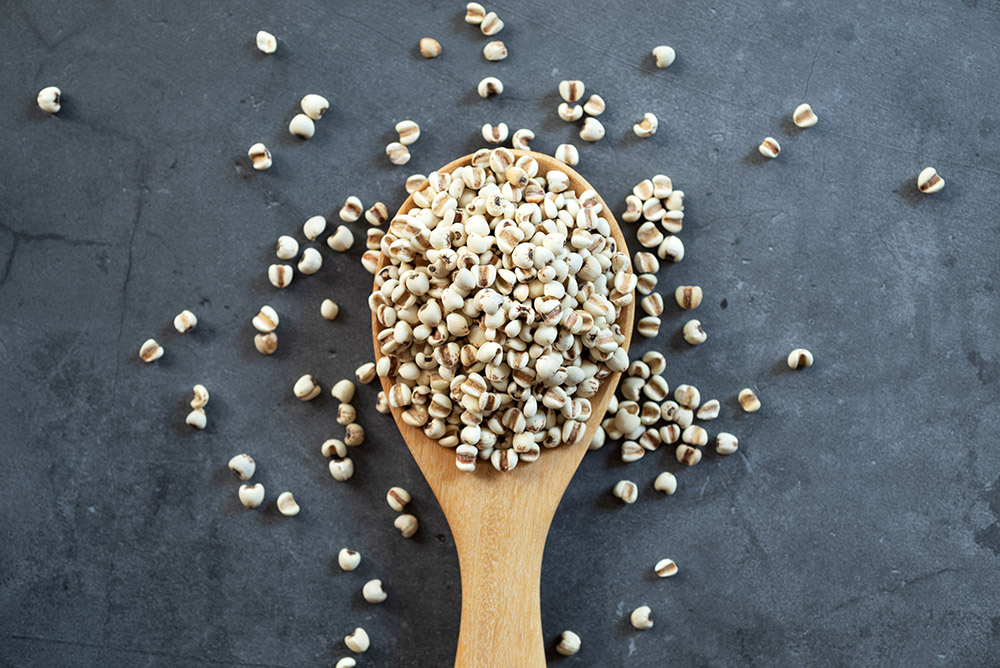Enjoy Eating Sensational Fresh Garden Weeds, Here’s 2 to Start: Lamb’s Quarters and Amaranth

By: Michael Tierra
It seems that each year it is getting increasingly more difficult to depend on my garden “weeds” to produce enough to barely pay the water-shortage-in-Northern-California water bill. And yet, I take pleasure in harvesting my food and herbs, especially lamb’s quarters.

Lamb’s Quarters (Chenopodium giganteum) from the Garden “Weeds”
The beautiful magenta lamb’s quarters is also known as magenta spreen, spreen, and tree spinach among others. It is a member of the plant family Amaranthaceae. It’s described as reaching 6 to 8 feet in height while in my garden it may only reach 2 or 3 feet before we’ve decided we’ve eaten enough or it just stops growing.
For eating, we harvest the young plant (weeds!) with the tastiest and softest leaves when it is only 8 inches tall. Considering the fact that most of the commercial vegetables that we consume are either lettuce or come from a single family of Brassicaceae or Cruciferae, it seems good to derive our quota of leafy vegetables from other plant species.
Oxalic Acid in Lamb’s Quarters (and other vegetables)
There are 70 species of lamb’s quarters, which include the nutritious grain seed amaranth. None are claimed to be poisonous except to some livestock and, of all things, cats. Lamb’s quarters and many other plants such as spinach, which when eaten raw, have trouble passing through the innards of feline animals especially.
Lamb’s quarters, along with many of our leafy vegetables except lettuce, especially rhubarb and spinach, are high in oxalic acid. In humans, oxalic acid binds with minerals to form oxalate. If binding with calcium, it becomes unavailable to strengthening bones and instead, forms stones.
With hypothyroidism being so widespread, these plants when raw are also considered ‘goitergens’ and are known to interfere with how your thyroid gland uses iodine. This is one reason I strongly object to the current restaurant fad of serving raw or slightly-cooked kale, spinach, broccoli, cabbage, or cauliflower. However, there’s no worry regarding these important and highly nutritious vegetables if they are soaked and cooked long enough to so as to leach and reduce their oxalic acid content.
Another garden “weed” in the same Amaranthaceae family is the beautiful self-sowing magenta amaranth. Like all the 75 mostly edible sub-species of amaranth, deprecatingly called “pigweed,” in terms of their nutritional content and spinach-like flavor deserve more respect. They are loaded with nutrients, containing more iron and protein than raw cabbage or spinach, more calcium and vitamin B1 than raw cabbage, and more vitamin B2 than cabbage or spinach.
Cooking with Lamb’s Quarters or Amaranth
My favorite way to cook “weeds” such as lamb’s quarters or amaranth is to boil or steam them and add olive oil, a dash of Bragg’s aminos or naturally fermented shoyu soy sauce, and a splash of vinegar. Here are some other ideas:
- Add a few leaves to scrambled eggs or omelets.
- Sauté and drizzle with olive oil
- Steam lightly and serve with butter, salt and pepper
- Toss leaves into any stir fry
What are your favorite weeds in your garden?
What is a weed?
Learn more about using herbs from your garden in our Herbal Courses.






Responses